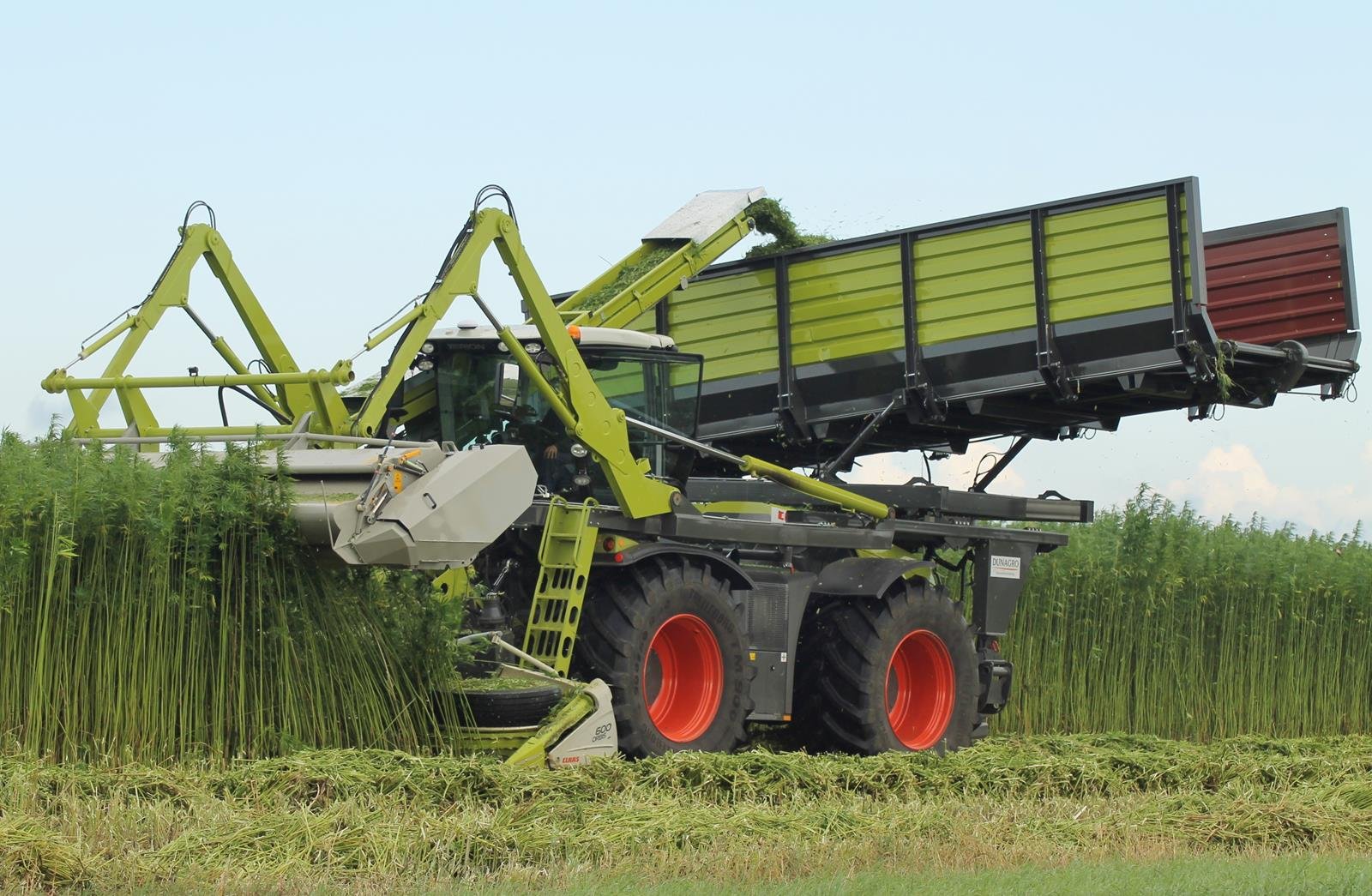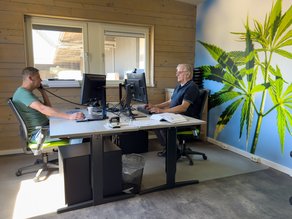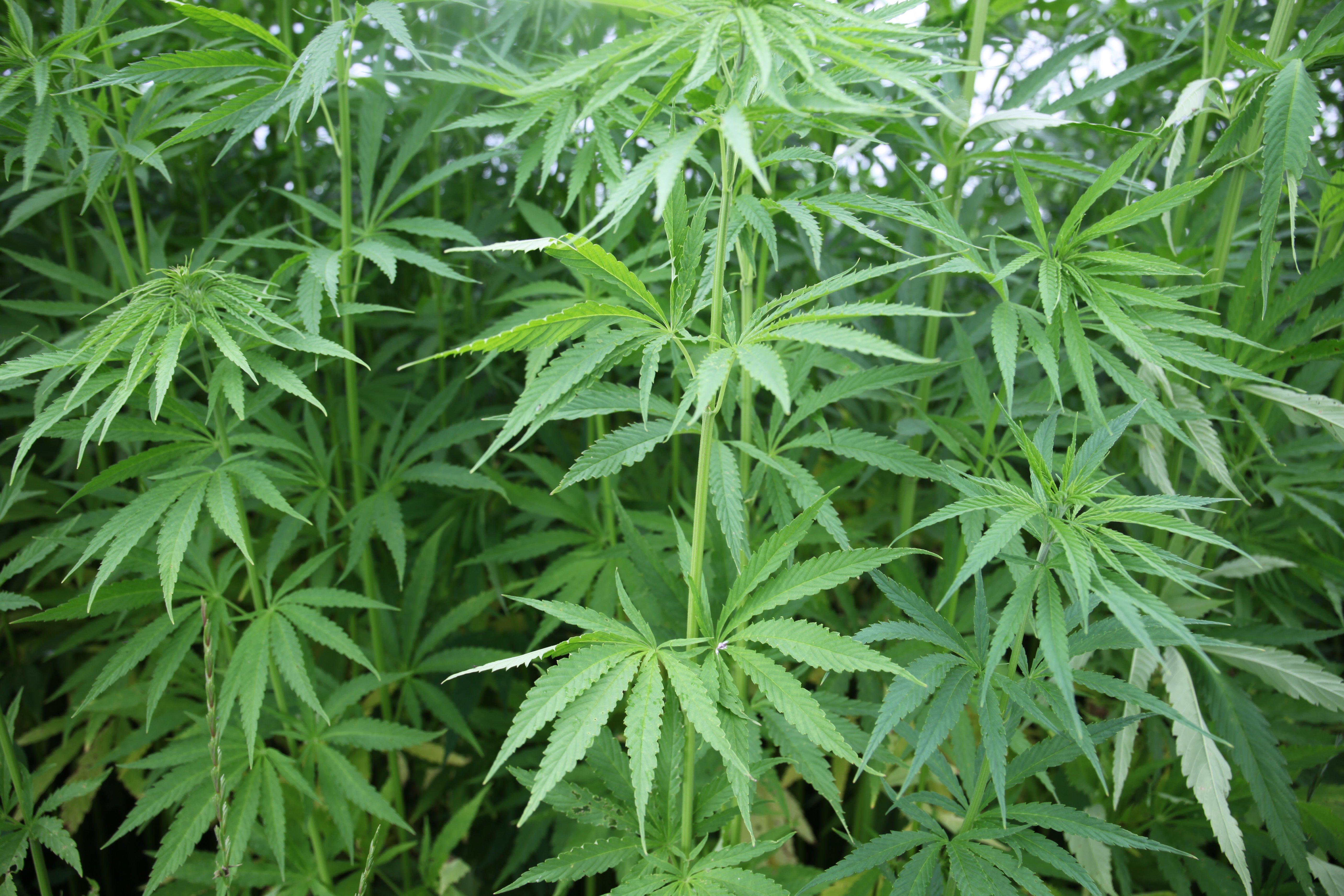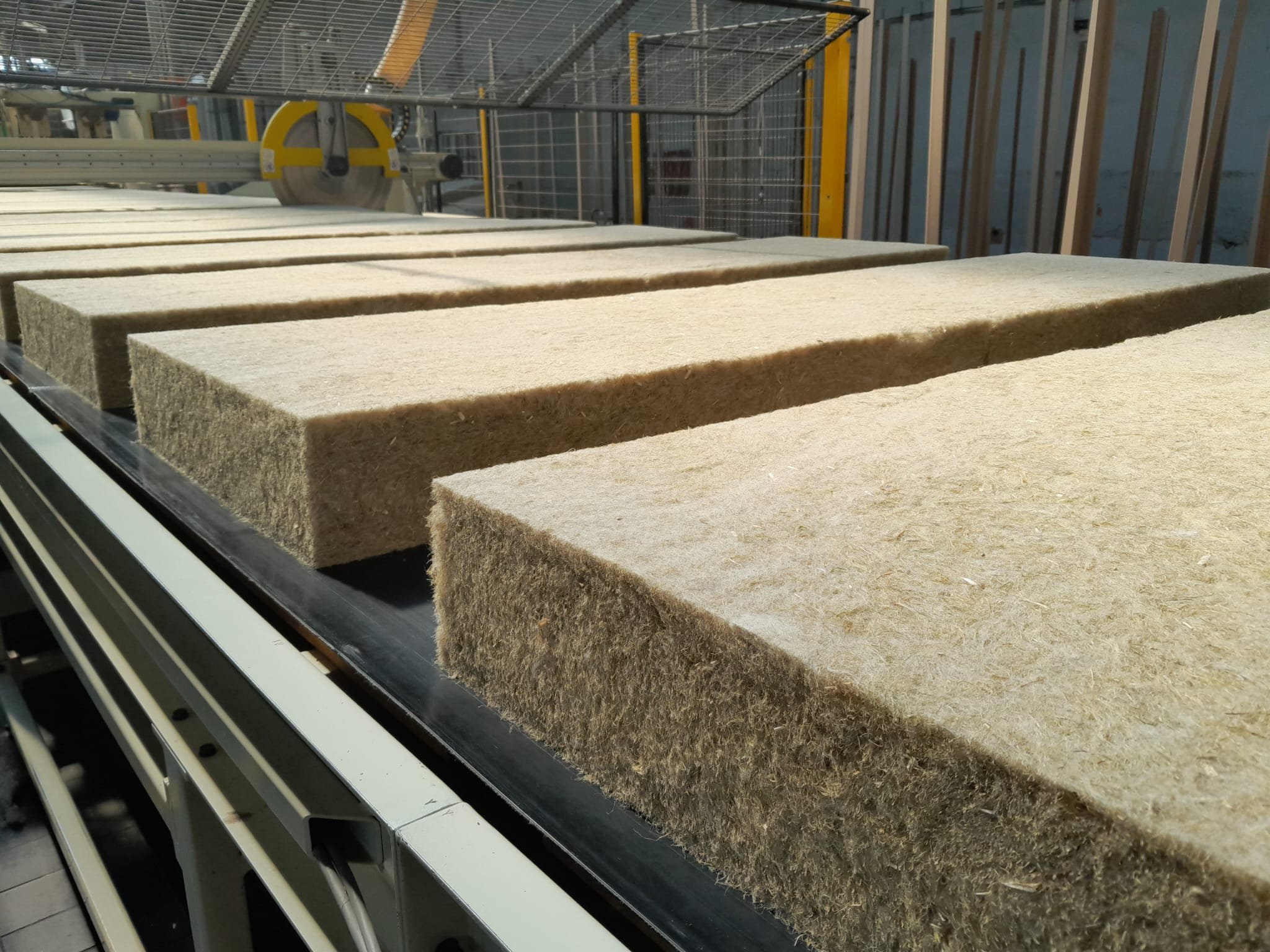Building with hemp fibre: Dun Agro now with 7 environmental declarations in the NMD
Since the 1990s, Dun Agro has been cultivating hemp fibre and processing it into products for the construction industry.

Since the 1990s, Dun Agro has been cultivating hemp fibre and processing it into products for the construction industry. Dun Agro developed everything in-house: from the machines to harvest the hemp to the production lines for manufacturing prefab hemp-lime panels for floors, roofs, and walls. The family business will now also start producing hemp insulation mats for interior and exterior walls themselves. Seven hemp fibre products are already listed in the NMD with category 1 data.
An interview with Albert Dun and Kees Dun.
It was the news reports and scientific studies in the 1980s that inspired Albert Dun at the time to explore the cultivation of hemp fibre.

General and Operational Directors of Dun Agro
Albert Dun en Kees Dun
From Potatoes to Hemp
“At that time, we had an arable farm with 800 hectares of land where we grew potatoes and sugar beets. However, the market was steadily declining, and the cultivation of environmentally friendly products was being heavily promoted. The news increasingly focused on how badly the environment was doing, scientific studies were being published, and of course, in 1993, there was the Maastricht Treaty.”
“Another important factor for us was that pesticides were a major cost item. All these factors combined made us start looking for alternatives. That’s how we ended up with hemp. Hemp doesn’t need pesticides, requires no additional irrigation, grows very quickly, and absorbs CO₂ in the process. Hemp also has deep roots, which improve soil structure.”
Start of a Journey of Discovery
In 1994, Dun Agro began cultivating hemp fibre together with HempFlax. In 1999, Dun Agro continued independently. It became a journey of discovery, filled with highs and lows, to figure out the best ways to sow, harvest, and process hemp, and to explore all the possibilities the crop has to offer.
Kees: “We developed our own sowing and harvesting machines, as well as a processing line for hemp straw—the stalk—to sow, harvest, and process the hemp as efficiently as possible. Initially, we produced products for the automotive industry. From the leftover material of the plant, we made animal bedding, hemp fertilizer, and hemp stable pellets. We also use the leaves to produce hemp juice or we dry the leaves and flowers to further process them into CBD(A) products.”
Increasing Focus on Construction
Over time, Dun Agro shifted its focus to the construction sector. “Building with hemp has been around for a long time, but it was always done in a traditional way. On-site, people would mix hemp with lime to make walls. This required a lot of manual labor and generated a lot of dust. We started thinking about how this could be done more efficiently.”
“We now have our own production facility to manufacture prefab hemp-lime panels for floors, roofs, and walls. We also knew that products like flax were already being used for insulation. So, we thought—shouldn’t that be possible with hemp as well? This led to the development of hemp insulation mats, in collaboration with a factory in the Czech Republic.”

Prefab Building with Hemp
Dun Agro now cultivates 1,600 hectares of industrial hemp annually in open fields. With its own production line for prefab hemp-lime panels, Dun Agro can manufacture facade, roof, and floor panels up to 6 by 3 meters in size. The panels are pressed in the factory. After a drying period of three months, they are transported to the construction site—already equipped with wiring and openings for window frames—for assembly.
“The benefits of building with hemp are significant. A hemp house is 100% vapour-open, with natural regulation of humidity and air quality. The panels offer high insulation values and fire resistance and are 60% lighter than concrete. Moreover, a hemp house stores so much CO₂ that we are building CO₂-negative.”
Collecting Data for the LCA
Dun Agro is strongly focused on scaling up. The visibility of its products in the Dutch Environmental Database (NMD) contributes to this growth. “To be listed in the NMD with category 1 data, you need to conduct a life cycle assessment (LCA) of your products. That was not very complicated for us. We manage almost everything ourselves, so it was easy to retrieve all the necessary data. It was also great that we could use the Witte Vlekken reimbursement scheme to hire an external consultant to perform the LCA based on this data.”
Continuous Improvement
“The LCAs also provided us with valuable insights. For example, we already knew that transportation to and from our factory in the Czech Republic—for producing the insulation mats—had a significant environmental impact. But in the results of an LCA, you can immediately see just how impactful it is. That led us to decide to start producing the insulation mats ourselves. We are now developing a production facility here. We are building a fully closed system using biomass burners, solar panels, and batteries, which means we will no longer need gas for the ovens in which we melt the fibres.”
Highly Reusable Products
“One area where we can still make progress is developing a concrete plan for how our products can be reused when a house or building reaches the end of its life cycle. For hemp insulation mats and hemp-lime panels, this isn’t complicated, since they are 100% natural products. However, we currently aren’t doing anything with this yet, because our products have a lifespan of 70 years and we’ve only been around for 30 years ourselves. But it’s certain that the ease of reuse is one of the strengths of this material.”
More Developments
There are still plenty of plans for the future. “Among other things, we are exploring how we can develop hemp-based sheet materials. We are also working on getting other hemp-based products included in the Dutch Environmental Database, such as sound barriers and loose hemp shives as blown-in insulation material. Hemp is a fantastic product that can be fully utilized. More and more builders are discovering its benefits.”
